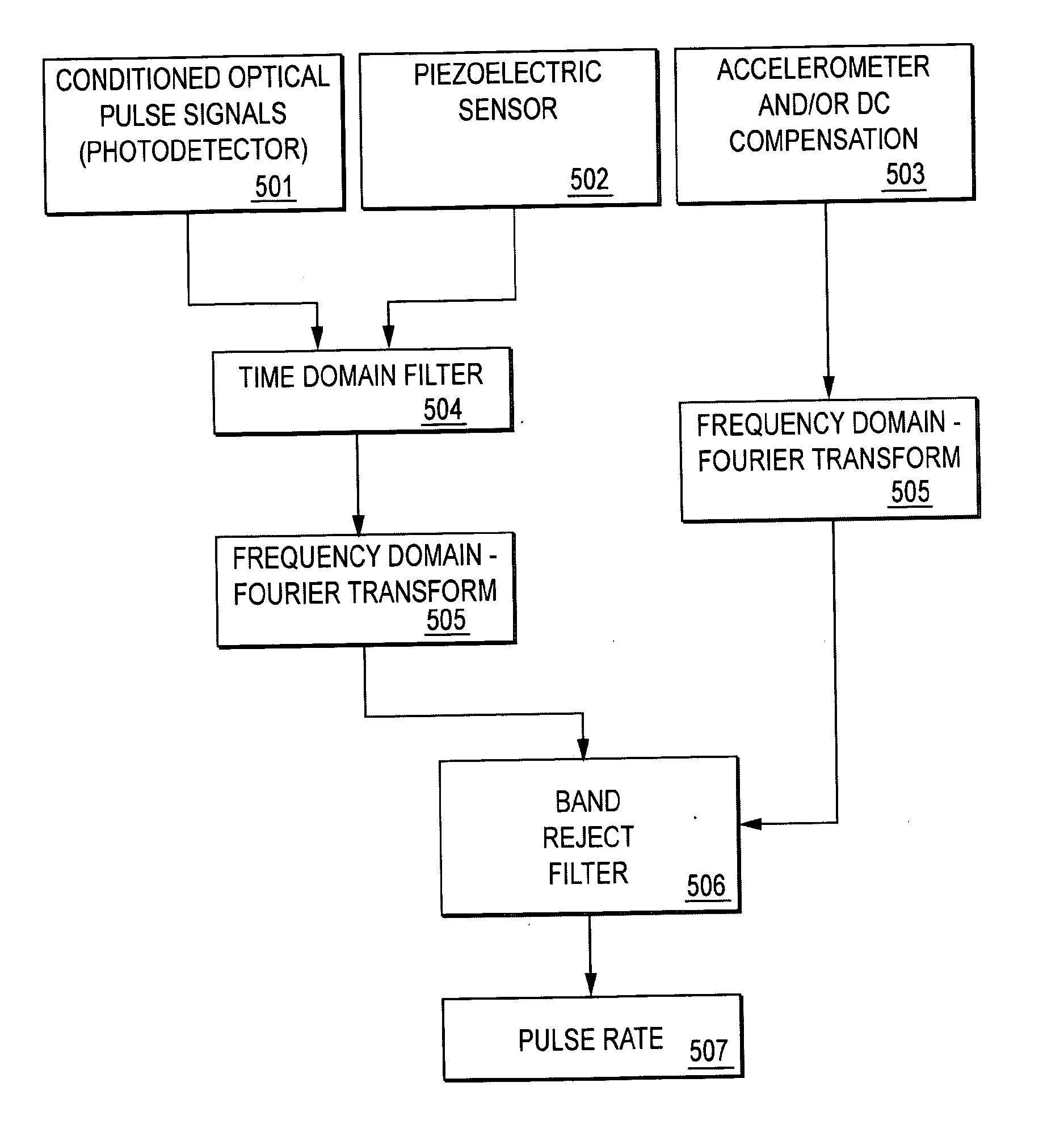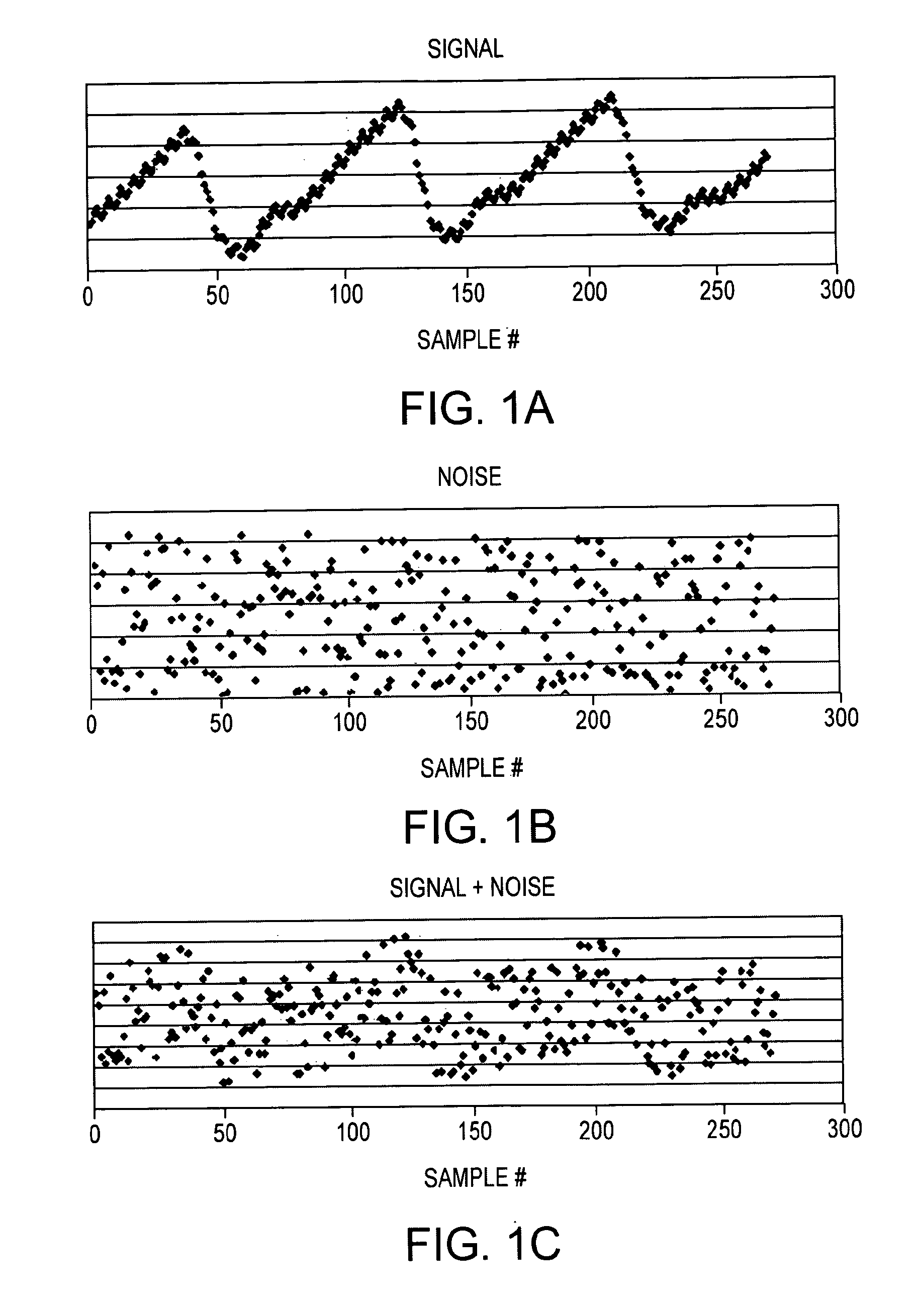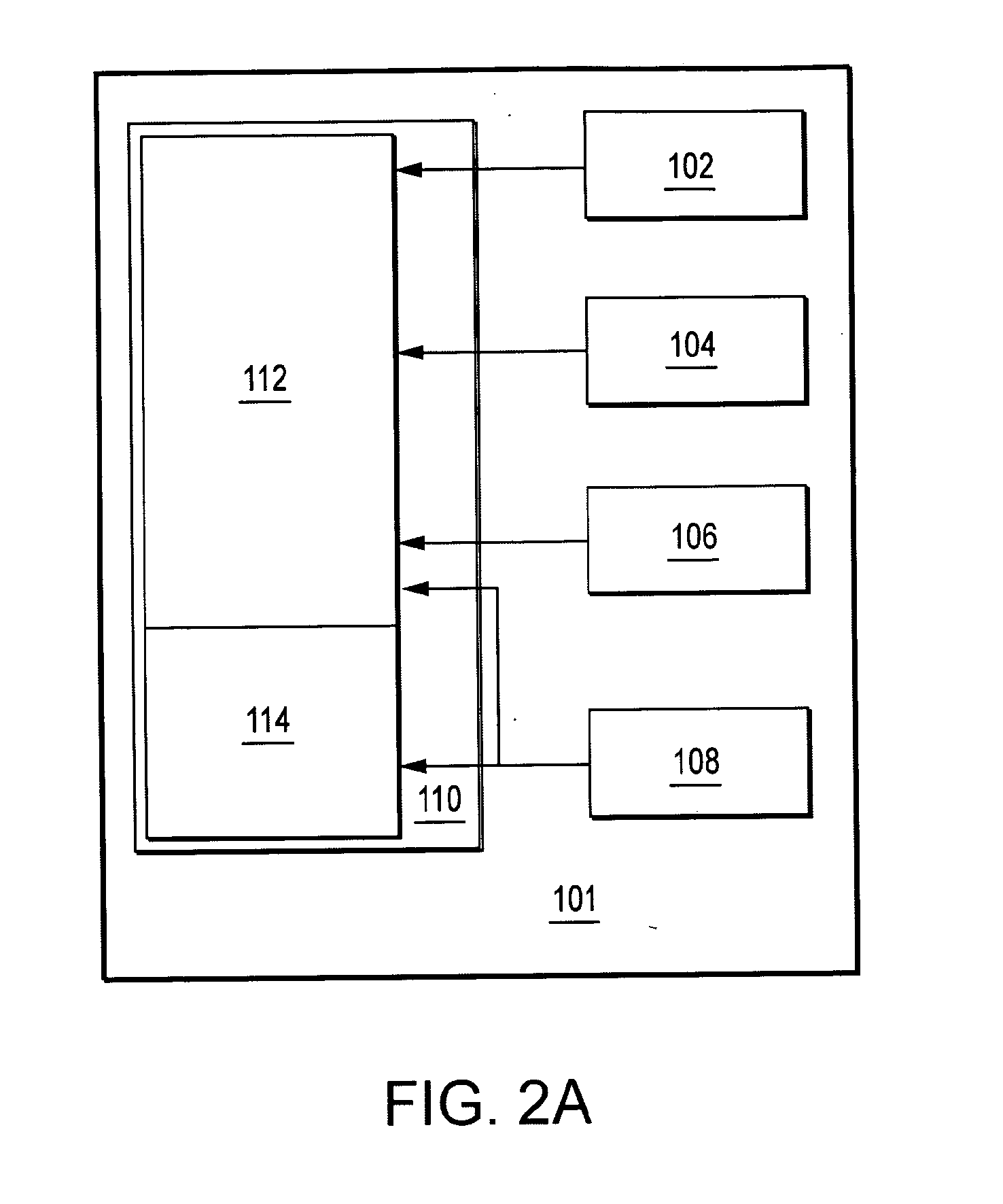Motion Cancellation of Optical Input Signals for Physiological Pulse Measurement
a technology of optical input and physiological pulse, applied in the field of signal processing, can solve the problems of low signal strength, inability to accurately measure the pulse rate of an active person's wrist, and failure to achieve pulse rate sensing at locations other than close to the heart, so as to achieve accurate monitoring and detection of pulse rate
- Summary
- Abstract
- Description
- Claims
- Application Information
AI Technical Summary
Benefits of technology
Problems solved by technology
Method used
Image
Examples
Embodiment Construction
[0026]While this invention is illustrated and described in a preferred embodiment, the device may be produced in many different configurations, forms and materials. There is depicted in the drawings, and will hereinafter be described in detail, a preferred embodiment of the invention, with the understanding that the present disclosure is to be considered as an exemplification of the principles of the invention and the associated functional specifications for its construction and is not intended to limit the invention to the embodiment illustrated. Those skilled in the art will envision many other possible variations within the scope of the present invention.
[0027]FIG. 2A illustrates a pulse rate sensor 101 in accordance with the present invention. Emitters 102 (e.g. LED, light emitting diodes) transmit a light source in the near infrared (IR) region into body tissue and a photo detector such as a reflective infra-red sensor 104 that receives the reflected light from the tissue. Puls...
PUM
 Login to View More
Login to View More Abstract
Description
Claims
Application Information
 Login to View More
Login to View More - R&D
- Intellectual Property
- Life Sciences
- Materials
- Tech Scout
- Unparalleled Data Quality
- Higher Quality Content
- 60% Fewer Hallucinations
Browse by: Latest US Patents, China's latest patents, Technical Efficacy Thesaurus, Application Domain, Technology Topic, Popular Technical Reports.
© 2025 PatSnap. All rights reserved.Legal|Privacy policy|Modern Slavery Act Transparency Statement|Sitemap|About US| Contact US: help@patsnap.com



